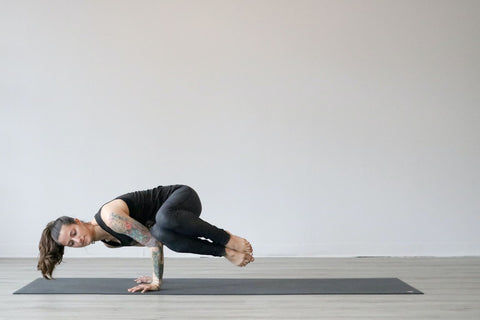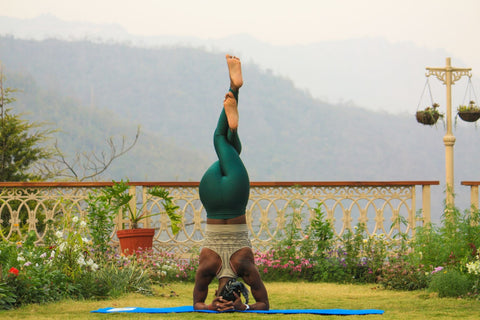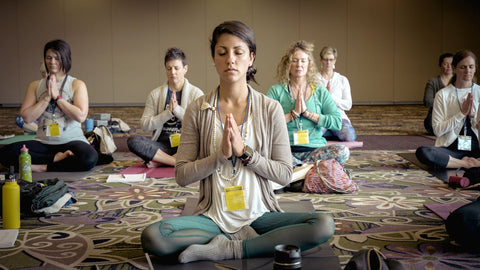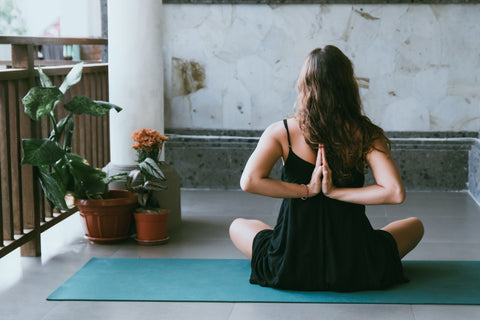“Being firmly grounded in nonviolence creates an atmosphere in which others can let go of their hostility.” Yoga Sutras of Patanjali 2.35

Often, in conversation with friends or family, I find that topics typically drift toward lifestyle choices, various spiritual practices, and more often that not, yoga. In recent years, yoga has exploded in Western culture, and those who haven’t dipped a toe into experiencing the mind-expanding bliss the awaits the end of a well-taught yoga class are very curious to know what it’s ‘all about’; why it’s so popular. I, personally, love these conversations, to have a chance to illuminate others to the transformative magic that lies deep within this practice, and also share some of the origins that aren’t as often spoken about in a typical 60-90 minute studio class. Even after we have learned basic fundamentals and foundations of the practice, who doesn’t love a good refresher course?
And what better way to begin, in 2018, than at the beginning.
It is in the first limb of Patanjalis 8-fold path to yoga, the Yamas, or external disciplines (how we function in the physical world), comprised of 5 parts, that we encounter the first of these parts, Ahimsā.
In sanskrit, Himsā means ‘to injure, or harm’, and anytime A is placed in front, it means ‘NOT that’.
So Ahimsā literally translates to ‘no injury, no harm.’

Today, we reflect on the event that took place April 4, 1968, an act of violence toward a true monolith for peace and equality that changed the world.
This opens a wound that invites Ahimsā to sink in and create reverence.
At once, I become curious about whether my current thoughts, actions, and words align with bringing greater wholesome goodness into the world. After all, it’s only through our own decisions that we can begin to see through new eyes and gain more balanced perspective.
We can think of the practice of non-harming in a lot of ways. Whether your heart turns toward the way you treat yourSelf (on mind, body, soul levels), the lives of others, current events, etc; really what we’re after is cultivating greater feelings of internal peace and wellness.
For me, becoming plant-based vegan over a year ago was a major turning point.
Consciously continuing to support avenues that are harmed (animal agriculture, ecosystem, personal health) didn’t align with my heart, and started to feel icky (this was the Creating Clarity part. See below!). I gave myself two weeks to try it and see how I felt, and was thrilled at how vibrant my energy level was. I began researching ways to make the shift easier (hello Sustainable Solutions!) and came upon vegan blogs and cookbooks (MinimalistBaker.com is a godsend) that made everything simpler and more manageable. Becoming conscious of what I put in my body began giving every day more purpose and meaning, which was very unexpected.
Every bite of delicious and nutritious food carried a message.
I felt liberated at my ability to choose and decide what I wanted to partake in, and very quickly, this internal freedom began trickling into many areas of my life, and elevated everything, in terms of making conscious decisions.
I also began allowing myself (a LOT) more time to dive into self-love, and self-healing work, which has been equally as transformative and liberating.

It’s within this work that we can begin approaching life anew, and see it penetrate all areas of our life.
This freshly cultivated love and respect vibrates at a higher frequency and radiates out to all we come in contact with, and in turn, gives others permission to get curious and begin releasing old patterns in favor of creating more positive change in their own lives.
In the end, I’m SO proud with how far I’ve come, and would like to extend what’s worked for me, to you!
Here are some questions to ask yourself that can make adapting Ahimsā easier:
Step 1 : Create Clarity
Question: WHY do I want to look deeper into this practice? WHAT feelings am I looking to cultivate?
As with anything, becoming clear on the reason you choose to bring something into your daily life packs a greater (and more attainable) punch. If we aren’t clear with the reasons why we want to commit to a new practice, it can become seen as more of a taxing obligation than an exciting new commitment.
Step 2: Sustainable Solutions
Question: HOW can I set myself up for success to create lasting change?
The key here is simplify, no one wants to take on something that’s going to feel more like daunting work than uplifting reward. We want to make the prospect of creating lasting growth as easy as possible (while still maintaining honest integrity for the practice) for ourselves.
Step 3: Revisit + Revise
Question: HOW often should I check in with myself? WHAT if I need to make changes?
Say it with me, CHANGE IS OKAY! Sometimes we need to make many changes to our lives, practices, diets, behaviors, communication patterns, etc. before we find what really works for us. If something isn’t working, no biggie! Keep in mind here that we are often our own worst critics, and that there actually ISN’T a rulebook for this thing we’re participating in, called life. Be kind to yourself (Ahimsa!). Commit to 5-10 minutes weekly or as needed to check in with yourself, and see whether any change would be helpful.
I hope this was helpful for you, Yogis and Yoginis!
Until next time, Namaste!
About The Author

Britt Lynn is a YogaClub Tribe Leader with an endless passion for creating greater connection with Self, spiritual development and normalizing vulnerability. She is certified SmartFLOW 200 YTT and specializes in teaching pre/postnatal yoga in Las Vegas, NV, where she was born and raised. If you’re diggin’ her vibe, feel free to check out her blog, Yoga. Nourish. Spirit., and other social media platforms!






